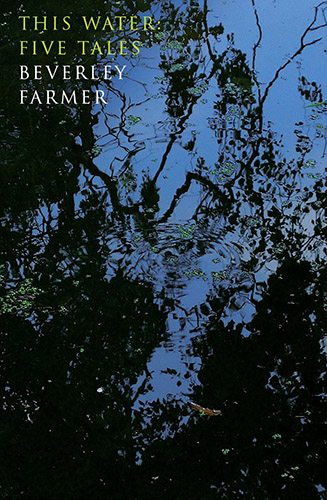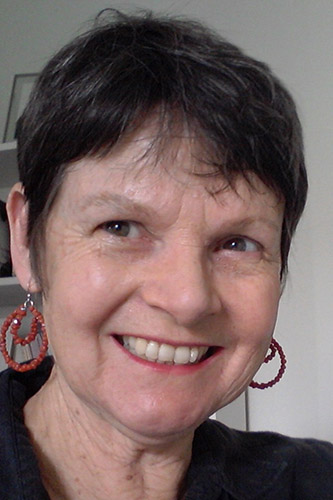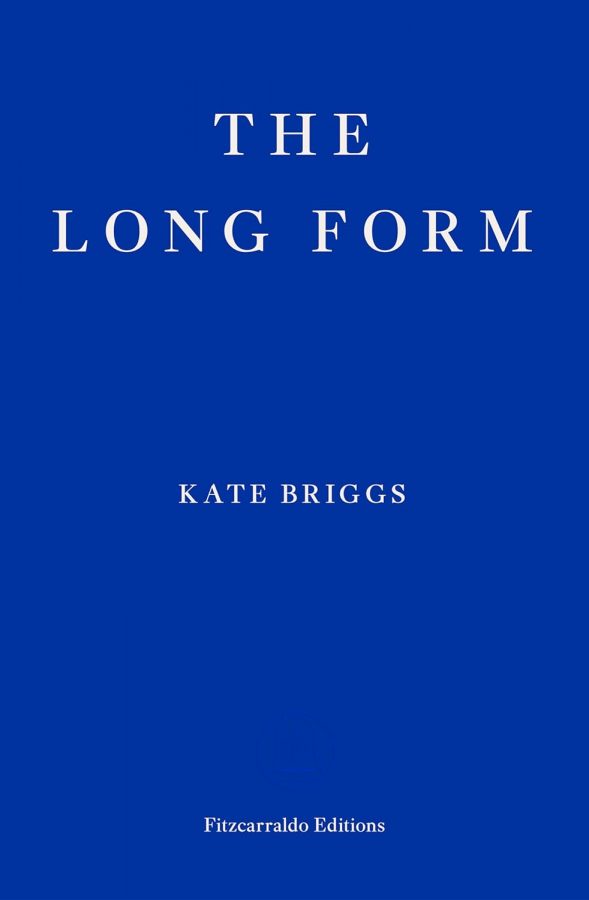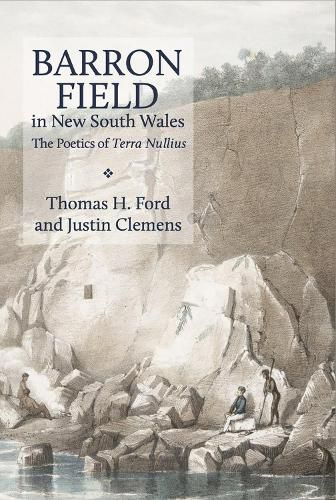When she began publishing fiction in the 1980s, Beverley Farmer was part of a rising generation of women writers adding their voices to the record of Australian life. She was seen as a woman of modern multicultural Australia who had married one of the new Greek immigrants and experienced the contrast of cultures between Old Europe and modern Australia.
Her encounters with Greek culture mapped one aspect of social change in the post-war period, as Greeks became Australians and Australians married Greeks, and Farmer’s own developing relationships with her husband’s family and her education in Greek culture opened new understandings of a dual Greek-Australian heritage. Yet Farmer wasn’t so much interested in witnessing social change or joining the barricades for feminism as in exploring how it felt to be a woman. Remember the ‘female, feminine, feminist’ trilogy, and the conviction that the first two were not necessarily feminist? Farmer was willing to address a female sensibility regardless of the risks of essentialism. Always careful and meditative, her fiction concentrated on the way the interior life responded to physical sensations. A woman’s body, with its changes and rhythms of blood, might be the source of some understanding of the human relation to a wider physical world.
In retrospect, it has become clear that Farmer is a philosophical writer rather than a realist; her stories are meditations on experience rather than narrative recreations of it. She is a reflective, poetic writer building her fictions from careful attention to delicate shifts in perception. Her dissatisfaction with conventional representations of experience was evident from A Body of Water (1990)—ostensibly a writer’s journal, but in fact a complex exploration of the way art is made. Farmer was interested in the way experience becomes part of the mind’s history and the many ways it might inspire art. There she expressed her interest in ‘work where the form, not the plot, imparts meaning’. The kind of structural plotting that holds a long novel together is not her forte; her strength lies in the short story and in the accumulation of ideas and observations evident in A Body of Water.
Her last book, The Bone House (2005) was called a collection of ‘essays’, though it is a series of meditations, gathering together experiences, scholarship, commentaries, and anecdotes around central questions such as the rituals of death, the anatomy of vision and its relationship to visual art, and the prehistory of the earth. These are demanding, complex pieces, the result of Farmer’s concerted enquiries into the relationship between our material beings, our sensual perception and the nature of art. Perhaps one of the most illuminating aspects of that book is its consideration of photography. The long essay, ‘Seeing in the Dark’ examines the history of photography and its relationship to human vision, covering astronomy and art, and contemplating the significance of photography’s ‘new alchemy’, ‘the embalming of the shadow, a kind of immortality’. Farmer is an accomplished photographer and her interest in visual perception is apparent in her fiction.
This Water is a collection of fiction – though Farmer continues to explore what the senses can teach us about the permeable barriers between our present world and the mysteries beyond it. Though the five tales in the book stand alone as narratives, they are carefully placed to lead the reader gradually into the imaginative realms where Farmer can examine elemental mysteries. The stories attempt to breach the borders between life and death, air and sea, human and animal life, and, of course, the place where dreams and myth contact our living experience. As in Farmer’s other writing, a woman’s sensibility is central to each of them.
The first story, ‘A Ring of Gold,’ begins in a familiar setting—a coastal town near the entrance to Port Phillip Bay, where Farmer has lived for much of her life. Two relatively ordinary events occur: after a king tide a seal appears on the beach and people gather round to stare at it, and, at an earlier time, the woman at the centre of the story finds a wedding ring on the beach. Around these events Farmer gathers a sense of the mystery of the otherworldly sea and its creatures, as the woman reflects on her life by the shore and the death of her husband. The woman’s dreams are as important as her daily experience of the sea, invoking as they do emotions of grief and physical memories of pain and loss. She is a swimmer whose pleasure in the sea comes from snorkelling—peering into the undersea world, invisible from the land.
Farmer invests everyday observations with a powerful sense of dramatic possibility. Look at her description of a conventional old weatherboard house near the entrance to the Bay:
The house she has lived in for most of her life stands midway between a lighthouse whose lantern swings out wide at night over the rock pools, and whose foghorn is caught up by passing ships and boomed back and back, and a church with a Sunday bell that is also the passing bell on those weekdays when a new grave lies open in the grass of the cemetery, planked over, with the tawny sand that underlies the soil spilt in a heap alongside, like sawdust. Her house is wooden, old and thin-skinned, and her windows are hooded except at the back, where the storm winds blow up. In rough weather the wind, the rain and the sea are one torrent that bellows and thumps at her shell of a house.
The panoramic description of the light and the sounds of the place moves in to focus in detail on the ‘new grave’ with the sawdust soil alongside, while the house becomes a metaphor for human frailty, ‘thumped’ regularly by storms. We are aware from the outset of the fragility of human life at the mercy of these elemental forces. We know that death is at hand.
The seal emerges from the ocean and, while the attitude of the onlookers moves from awe to contempt, the woman acknowledges something of herself in the animal: ‘Before her eyes is the salmon-red gullet of the seal bared in a mute, a mutual scream of horrified recognition.’
The ring, of course, is a traditional symbol of human bonds of love, invoking remembrances of her husband, who never wore a ring. The story works by accumulation of such connections: the woman reflecting on her reading about the sea—Coleridge’s Ancient Mariner, Kingsley’s water babies and other childhood stories—and a radio account of Antarctic explorers killing a seal for food. The sea offers up other strange signs: a plastic shampoo bottle covered in barnacles that become a repugnant mass of living, smelling matter a few days later; the heaps of fish being pulled onto the beach by frenetic men so that ‘the beach is alive with their flutter and glint’. In this way the story builds a network of factual, yet uncanny, connections between human activity and the mysteries of the sea. There is no straightforward explanation of events. The story is not so much about the particular woman, as about the possibilities of interpreting the signs around her. It is a relief that Farmer holds back a little from delivering the only obvious conclusion to the narrative.
If we recognise the folk story of the Silkie behind this tale, then it may have a further resonance, but ‘A Ring of Gold’ remains in the world of the possible; its mythic potential lies in dreams, in literature, in the residue of social traditions such as the wedding ring, and in the nature of the sea itself.
The following tales rework folk legends and fairy tales whose outlines we may vaguely recall from childhood, classical mythology or the plots of operas. The tale called ‘This Water’ may be familiar as a variation of the Celtic legends of Diarmuid and Grainne, Deirdre of the Sorrows, or Tristan and Isolde in which a young princess flees from the elderly king who wants to marry her into the arms of his young kinsman. In Farmer’s hands, it is narrated by the woman, now married to the elderly king, though she insists, ‘As far as a woman can, I make sure I keep my hands on the reins of power. I play my part to the hilt.’ As a spoilt girl, ignorant about the true power relations between men and women, she agrees to meet the old king as suitor, then makes a sudden wilful choice of the young warrior, forcing him into a life on the run. Her reluctant lover must spend the rest of his life fighting enemies who were once his friends, soaking the land ‘in the blood of thousands of brave warriors’. This tale, so often presented as a paradigm of romance and tragic love, here is stripped back to a matter of irrational impulses and physical appetites—sexual lust and bloodlust, revenge, the thirst for power. The woman defends her actions by reference to the senses: ‘As with milk, honey, salt, water, we only know what something is like once we touch it, or smell or taste or swallow it, or are swallowed by it’.
Farmer also sets the third tale in the Celtic world, this time a lake in Ireland—probably inspired by her time at the Tyrone Guthrie Centre on Lake Annaghmakerrig. Framed as an oral fable of Ireland where stories ‘have the texture of dreams, with no happy endings’, ‘The Blood Red of Her Silks’ begins in a pre-Christian age and ends in the time-measured Christian era. It takes us to a place and time where the boundaries between humans and animals, between the magical and everyday worlds, are still fragile.
A jealous stepmother turns a princess and her brothers into swans, forced to move between the sky, the water and the land for 900 years. The story traces their shifting lives over hundreds of years, the patterns of their flight, their suffering in wild sea storms and their returns to the lake. They live outside time, unable to reproduce or mix with the other swans, though the world changes around them; their father’s castle becomes a ruin and people begin to visit their isolated island and lake. When, after centuries have passed, a Christian hermit sets up a shanty on the shores of the lake, he interprets the singing swans as a choir of angels, while they hope that his talk of a ‘saviour’ means the end of their captive lives as swans. He speaks of eternal life, which they, desperate for release from it, know too well. But their final escape into temporality is an anticlimax: they collapse into bones and skin, nothing but abject material remains. In the Christian era, their existence can be obliterated or denied, leaving only stories and speculation.
This long story gives Farmer room to gather the kind of imagery of sea, water and light that she does so well. She traces the connections between Christian imagery and the fable of the swans, carefully delineating the parallels, so that the loss of the swans also represents the end of the rich imaginative world in which they belong. Christianity extinguishes the mythical, and gestures towards a more limited material existence.
These stories aren’t ‘moral’ in the sense of delivering a lesson, or even a clear meaning. Like some of Hans Christian Andersen’s stories, they work through the strength of their imagery. At her best, Farmer seems to find the language that can open the possibilities of the places and objects she describes—the blood red silk dress, the swanskins and the light and darkness around the lake.
In ‘Tongue of Blood’ she transforms the Greek classic story of the aftermath of Troy into a dramatic lament by Clytemnestra for the sacrifice of her daughter. It might as accurately be called a dramatic poem as a tale. It begins with Clytemnestra’s voice calling out from the underworld beyond death, a voice ‘hot in your ear’, a howl of pain demanding to be heard from the depths of the earth:
O to be full flesh who am a hollow cave
labouring my own way down into the earth’s
caves of no earth but stone
caves burrowing coilings
writhings fumings with smoulder the deeper
down to the seethe of fire and the rock melt
thundering in outpouring rivers of fire
only here in the upper caves may a crack
of light, a scrape of blood seep
down to me in long threads
like the roots that grasp
cut in midair
turned to immortal stone
or sweet water trickle down to me
or a nipple of stone that swells as I close
my mouth
over one drop
another drop sucked out of the world of day
and night through dry stone
for only the bold of the dead comes this far
and water that has lost its way
Hers is an ancient voice, buried beneath us, calling out to our present. The earth is a ‘great corpse’ holding all the dead of the past, and Clytemnestra asks, ‘What are shades but absences, echoes, reflections cast in the water and the air and the mind’s eye, breath of the cave winds?’ Farmer presents the logic of Clytemnestra’s lament as she mourns her lost daughter and Agamemnon’s deceit. If the woman in ‘This Water’ has taken her one bold action of will, to bring down suffering on others, Clytemnestra is a bereft mother who has no illusions about her husband and the bloodlust behind the Trojan wars. He is no hero, but the murderer who has sacrificed their daughter and won a victory by that famous trick of the wooden horse. The voice here is energetic, railing at the murderous nature of men and calling other women to a ritual of grief. She finds no consolation in ideas of afterlife, or communion with gods; life is only a matter of ‘tissue and bone’.
After this dramatic mix of poem and narration, the final story, ‘The Ice Bride’ returns to a place outside of time. In some kind of Northern ice age, a young woman is the captive of her Master and lover. The tale appears to be a variation of the Bluebeard story, with the bride left alone to wander the labyrinthine halls of the ice palace while her Master disappears to unknown activities. She has no memory, and must learn everything from the exhibits in the ice palace and from the objects that her Master brings her. One of these is a clock, and she gradually begins to notice the movements of the sun and moon and the changing seasons. She notices fossils caught in his collection of stones, then he shows her a bee caught in a piece of amber, and she understands that there may be living creatures beyond the ice. Time means inevitable change.
Like ‘The Blood Red of Her Silks’ this story is novella-length and it tests Farmer’s ability to maintain interest as the reader is forced to share the bride’s sense of confinement, her isolation and the emptiness of her days. Farmer is exploring the idea of a static existence, and the story moves at a glacial pace, entirely in present tense. She demonstrates her virtuoso powers of visual description as the bride discovers an array of beautiful objects:
There is crystal of every shape and thickness and no colour, and then, in the next room, of every radiant colour at once, with the light casting up images of each brilliant object; plates of silver and gold line the shelves of one room, and white dishes another, and cups like thin silk, or ice, in which the fingers holding them show up like shadows. There is room after room of stones large and small, in the light of lanterns angled so as to penetrate some way into those stones that have a translucence or a light-catching texture. Thus they cast their shadows and a mesh of superimposed reflections, an effect not dependent on snowlight or moonlight, not subject at all to chance and change.
The Ice Bride lives within a fairytale of aesthetic delight, a perfection where all living things are dead, as the fossils in the stones, or the bee in amber. The few words she and her Master speak are formal and restrained. It is as if Farmer is deliberately creating a dead world of beauty, perhaps inviting the reader to rebel against it. I have wondered at the delight that little girls find in a story like Disney’s Frozen which takes its central idea from Andersen’s cruel Snow Queen. My guess is that the cartoon’s visual images of icy beauty, combined with its tale of the triumph of two loyal princesses appeal to their desire for beauty and some agency in the world. Nevertheless, there is a deathly idea at its centre, as there is in Farmer’s tale: flawless beauty as a form of stasis.
In this last book, Farmer is taking risks. Here, she explores the complex ideas apparent in The Bone House, trusting her own poetic skills to invest slight narratives with dense imaginative meaning. ‘The Blood Red of Her Silks’ and ‘Tongue of Blood’ are, perhaps, the most successful of them, as they provide her with stronger narrative bases for her stream of sensual imagery.
It is remarkable that several Australian novelists who began writing in the 1970s and 1980s have turned to more fantastic fiction-making over the past decade. In the case of Farmer, David Malouf and David Foster this fiction emerges from long study of the literatures and fables of the pre-Industrial and pre-Christian eras. I am thinking of Malouf’s improvisation on the story of Priam and Achilles in Ransom (2009) and the series of tales that make up the first part of Foster’s Sons of the Rumour (2009) which also includes an imagined world of ice. Each book relies on intense and wide-ranging scholarship. It is as if each writer is inviting us to look beyond our immediate world and to share their wisdom, which may be hard-earned by readers as well as the writer.
Works Cited
Beverley Farmer, A Body of Water, UQP, St Lucia, 1990.
— The Bone House, Giramondo, Artarmon, 2005.







